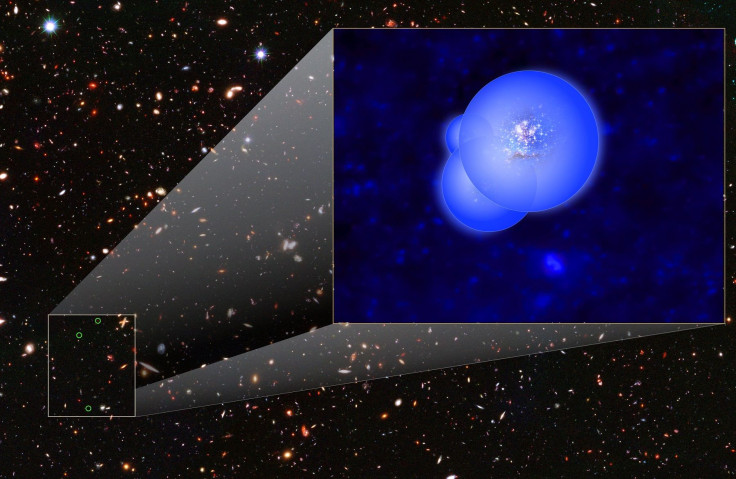Astronomers Identify Farthest Galaxy Group To Date
KEY POINTS
- Astronomers found the fathest galaxy group identified to date
- EGS77 dates back to the time when the universe was just 680 million years old
- Observations show the trio's participation during the universe's reionization
An international team of astronomers has found the farthest galaxy group identified to date. The trio EGS77 dates back to when the universe was still just 680 million years old, and observations show their participation during the reionization.
Cosmic Makeover
The universe was extremely hot and dense during its earliest phase. At the time, atoms could not exist and the universe was in an ionized state. After the universe cooled and expanded for a period of about 380,000 years, the particles combined to make the first atoms, over 90 percent of which were hydrogen, and the first galaxies and stars were formed some hundreds of millions of years later.
During this time, intense ultraviolet light from the first stars and galaxies gradually split apart the hydrogen atoms, thereby creating bubbles of ionized gas. Such bubbles grew around all galaxies, and in time, the bubbles grew and the cosmic fog was lifted.
This cosmic makeover is known as the reionization period in which the universe was beginning to move from the dark ages to the cosmic dawn, and it is the focus of the Cosmic Deep And Wide Narrowband (Cosmic DAWN) survey.
Cosmic DAWN Survey
As part of the Cosmic DAWN survey, an international team of researchers imaged an area in the Bootes constellation using the National Optical Astronomy Observatory’s Extremely Wide-Field InfraRed Imager (NEWFIRM) attached to the Mayall telescope in Tucson, Arizona.
Upon comparing their images with other images taken of the region, the astronomers were able to tag the galaxies appearing in near-infrared images as candidates for the survey while those that appeared in visible light were rejected for being too close.
Here, they detected far-ultraviolet light known as Lyman alpha emissions from galaxy trio EGS77 at near-infrared wavelengths, making it a very viable candidate for the survey.
EGS77
EGS77 dates back to the time when the universe was very young at 680 million years old. Using the Keck I telescope in Hawaii, the team also confirmed the galaxies’ slightly different wavelengths, suggesting a separation between them of about 2.3 million light-years or just a little closer than the distance between our Milky Way and its closest spiral galaxy neighbor, Andromeda.
“The young universe was filled with hydrogen atoms, which so attenuate ultraviolet light that they block our view of early galaxies,” James Rhoads said, presenting the findings at the 235th meeting of the American Astronomical Society. “EGS77 is the first galaxy group caught in the act of clearing out this cosmic fog.”
Simply put, even though other more distant individual galaxies have been previously observed, EGS77 is the farthest galaxy group to date, with each member prominently showing the specific wavelengths of far-ultraviolet light from the reionization.
New Telescopes
Such reionization bubbles from the cosmic makeover era are expected to be rare and difficult to find, but with the upcoming James Webb Space Telescope, which is sensitive to Lyman alpha emission, as well as the planned Wide Field Infrared Survey Telescope, the hope is to find more of such galaxies that can give clues to the all-important period in the universe's history.

© Copyright IBTimes 2024. All rights reserved.






















